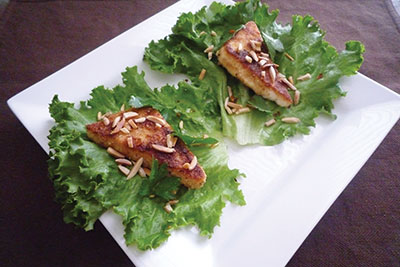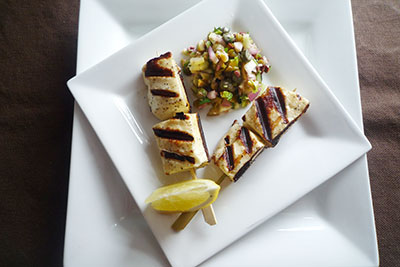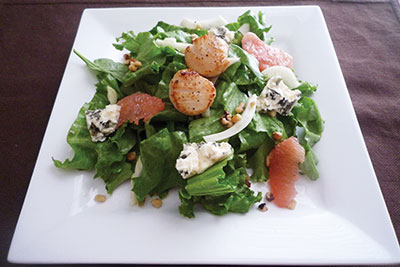
Recipe Rescue: July 2014
Patrick Mathieu
Features Health and Wellness NutritionThere are very few ingredients in the cooking world that offer such pure pleasure and are as diverse and complex as cheese.
There are very few ingredients in the cooking world that offer such pure pleasure and are as diverse and complex as cheese.
From enjoying the endless varieties on their own to the excitement of discovering new dishes to cook, cheese is an ingredient to savor.
It is not uncommon these days to peer into the cheese case at the local supermarket and see hundreds of different shapes, sizes, colours, moulds and smells. How do you even begin to decide what to choose to enjoy or experiment with, especially if the only cheese you grew up with came in a yellow and blue box of macaroni?
By learning about and focusing on the basic styles of cheese, the type of milk used (cow, sheep or goat), the country of origin, and the aging process, you will be able to discover the world of cheese, learn which types you enjoy or can’t bear to smell, and understand which cheese is best suited
for what.
With thousands of varieties of cheese, it is next to impossible to compile a list of favorites. I enjoy the classics such as a stretchy fresh mozzarella, creamy Brie or melty Monterrey Jack. Below are some of my preferred cheeses and the suggested uses, which I believe everyone should at least know about and hopefully taste and experience.
Cheese, like so many ingredients, is subject to each person’s senses, but as was the case when I converted my brothers to blue-cheese lovers from skeptics through a chimmichurri flank steak and blue cheese flatbread – you’ll never know how delicious it is until you try it. Let’s get something straight: there are absolutely no bad cheeses. Limburger – which has a strong and rather unpleasant odour – is close, but even it’s delicious!
Cheeses you should get to know:
Roquefort – A sheep’s milk blue cheese from Roquefort, France, that uses the mould from its caves to produce this amazing, very sharp and nutty cheese. I enjoy it as is but it pairs very well with nuts and honey, so check out my recipe for seared scallop and endive salad with Roquefort, toasted walnuts and honey lime vinaigrette.
Smoked or aged cheddar – The best brands come from Canada (I love Cow’s brand from Prince Edward Island) or England. Usually made from cow’s milk, the better ones are aged at least one year. The colour can range from ivory white to straw to a deep caramel colour. Often sharp and crumbly, I love my cheddar added to soups, grilled cheese or other sandwiches and casseroles.
Parmigiano-Reggiano – Real parmesan cheese does not come in a shakable container; believe me, you will discover the difference! This dry, hard, crumbly cheese from Italy is well aged and has a great crunch and a deep nutty flavor. Don’t be afraid to try it on its own but of course it is perfect grated on salads and pastas. Don’t forget to save your rinds for adding flavor to soups.
Manchego – What Parmigianno is to Italy, Manchego is to Spain. It is made with sheep’s milk and has a rich buttery and deep salty flavor. Enjoy as is or check out my recipe in which it is breaded and fried!
Queso fresco – This is a soft, Mexican, fresh cheese, meaning it hasn’t been aged. It is usually made from a combination of cow and goat milk. It is very light with a salty sour kick and is one of the best cheeses to have on hand to sprinkle over salads, grilled vegetable, and, of course, Mexican dishes such as tacos and enchiladas.
Emmental – This cheese is what many people think of when they hear “Swiss cheese;” it has the holes and everything. It is a firm cow’s milk cheese from the mountains of Switzerland. It is a great melter and is perfectly suited for fondue, grilled cheeses, or grated over casseroles and soups
Chèvre – The French word chèvre translates to “goat,” and is used to refer to any cheese made from goat’s milk. Bright and briny with a lemony flavor, chèvre is sold in vacuum-sealed logs, sometimes flavored with herbs, spices, or garlic. Chèvre is great crumbled in salads, breaded and fried, or served in sandwiches. And it makes the best macaroni and cheese.
Halloumi – This semi-hard, unripened, brined cheese made of sheep and goat milk has a very high melting point so it can be fried or, even better, grilled. Halloumi is a great addition to grilled vegetable kebobs.
Honorable mention: Gouda, Gruyere, Camembert, Provolone, Cojita, and Marscarpone (for dessert)
My dilemma is that my list of favourites, which I intended to cap at five, continues to grow. Hopefully, with this bit of insight and, perhaps, with the help of your local cheesemonger, you can navigate the world of cheese. Allow your taste and senses to guide you and don’t be afraid to try something new, because in the world of cheese, there is only best and a little less than best.
Warm almond-encrusted lettuce wraps Ingredients:
Directions:
Grilled Halloumi kabob with olive salad
Directions:
Olive Salad – ingredients
Directions:
Endive salad with honey-lime vinaigrette and seared scallops Ingredients
For the Salad:
Directions
|
Patrick Mathieu is a 13-year veteran of Waterloo Fire Rescue, where he is acting captain. He has won several cooking competitions and has helped raise thousands of dollars for charities by auctioning gourmet dinners at the fire hall. Contact him at stationhousecateringco@yahoo.ca
Print this page


